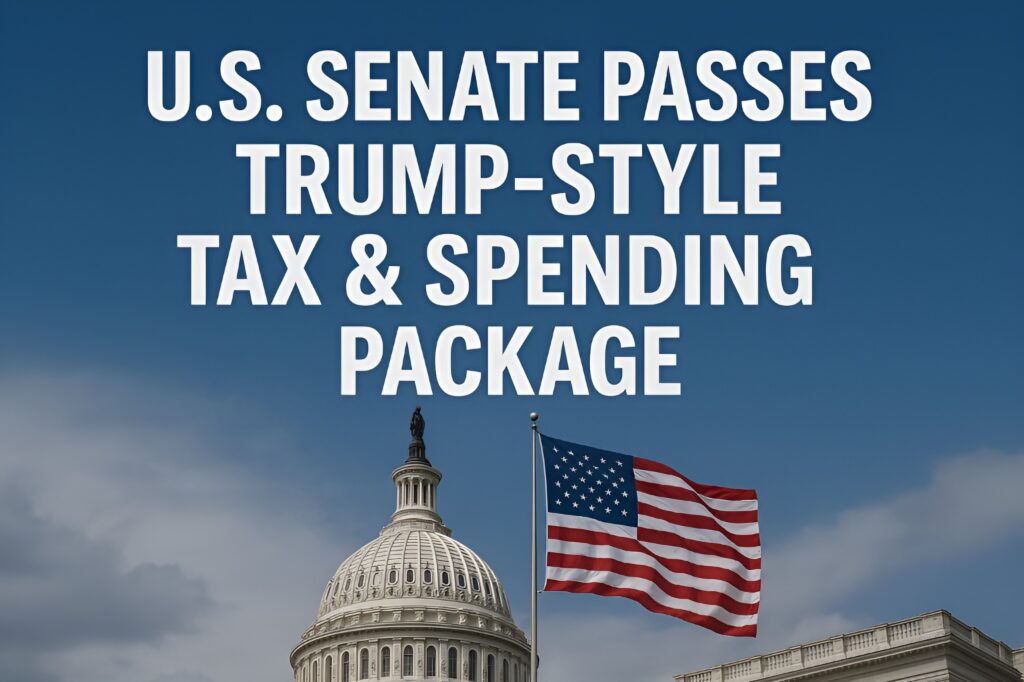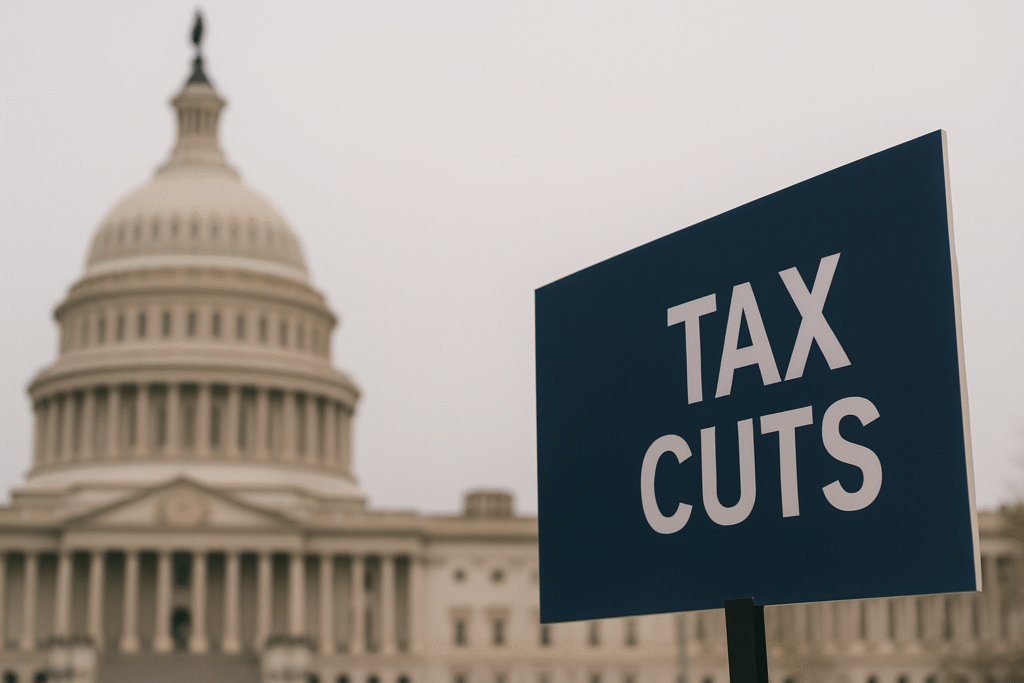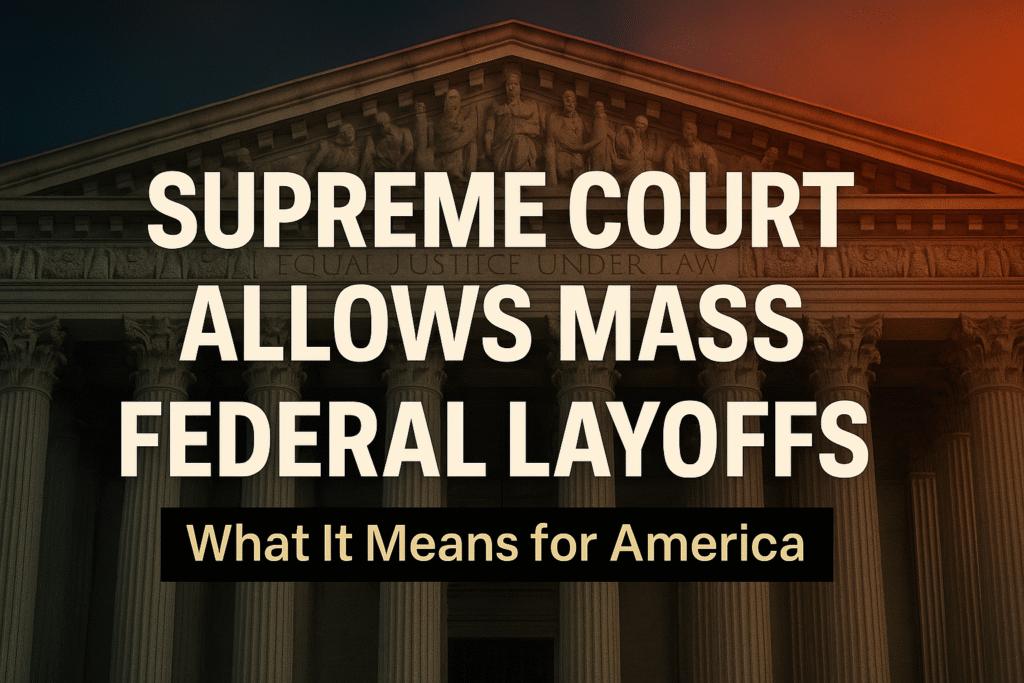
In a major development that has reignited debates across the political spectrum, the U.S. Senate has passed a Trump-style tax plan, echoing many policies from Donald Trump’s 2017 Tax Cuts and Jobs Act. This plan follows many of the same ideas from his 2017 Tax Cuts and Jobs Act. With the focus on economic growth through supply-side strategies, this new law could change how taxes are handled, how the government spends money, and how much money people have.
Here’s what the Trump-style tax plan includes:
- Lower the corporate tax rate from 21% to 18%
- Reduce income tax rates for people who earn a lot
- Give more tax breaks to small businesses
- Offer tax relief for long-term investors
- Raise money for the military and defense
- Cut funding for education, housing, and food help
- Reduce rules on fossil fuel and tech industries
People who support the plan say it will help the economy grow, create jobs, and boost the stock market.
However, others worry that these changes will hurt ordinary Americans and make the country’s debt worse.
Who gets the most from this plan?
The main idea is to support businesses and wealthy individuals.
So, the biggest winners are:
- Companies that will pay less in taxes
- High-income people, especially those making over $400,000 a year
- Oil, gas, and tech companies that face fewer rules
- Investors who get tax breaks on their investments
For regular people, the results are mixed.
Some middle-class families might get small benefits, but most of the advantages go to the top 10% of earners.
At the same time, programs that help people at home are being cut, which affects:
- Money for schools
- Housing assistance
- Food help like SNAP
- Environmental protection efforts
This unfair distribution is why many call the plan a “wealth transfer” that helps rich people more than others.
Political Motivation Behind the Legislation
So why is the Trump-style tax plan coming back in 2025?
Republicans, who now control a narrow majority in the Senate, are using this moment to push their economic plans before the 2026 midterms.
Senate Majority Leader Mitch Harper said, “This bill brings back American prosperity, reduces taxes, and limits government control. ”
Democrats, however, say the Trump-style plan helps the rich and hurts working families.
They also worry it could hurt important services like healthcare and education.
President Biden has said he will veto the bill if the House approves it as it is now.
But some political experts think Republicans might try to get it passed without the President’s approval by using a special process called budget reconciliation or by making some parts of the plan work with Democrats.
Reactions Across America
People are reacting to the Trump-style tax plan in different ways:
- Wall Street is excited, with the Dow Jones rising more than 400 points after the vote.
- Progressive groups and unions are protesting, calling the bill “trickle-down economics 2.0
- Small business owners are hopeful about tax cuts, but worried about healthcare and infrastructure.
Polls show some support for the plan’s idea of boosting the economy, but more people are unsure about its long-term effects, especially on public services and inequality.
What’s Next for the Trump-Style Tax Plan?

The bill now goes to the House, where it may face bigger challenges.
If it becomes law, it could start being implemented in early 2026, changing tax filings for that year.
Here’s what might happen if the Trump-style tax plan passes:
- New tax brackets for individuals and families
- Big benefits for large companies and investors
- Cuts to federal programs starting in FY 2026
- Legal fights from groups focused on civil rights and social issues
It may also become a major topic in the 2026 midterms, influencing how candidates talk about the economy.
Final Thoughts
Passing the Trump-style tax plan in the Senate is more than a financial move—it shows a change in political direction and a revival of the idea that cutting taxes for the rich will help the whole country.
Whether it leads to long-term growth or more economic divides is still unclear.
What is clear is that this law will affect taxes, jobs, education, and healthcare.
As the debate moves to the House, Americans are watching carefully.
What is the Trump-style tax plan?
The Trump-style tax plan refers to a set of tax and spending policies that echo the 2017 Tax Cuts and Jobs Act introduced during Donald Trump’s presidency. It includes corporate tax cuts, lower income taxes for high earners, capital gains relief, and reduced government spending on social programs.
Who benefits most from the Trump-style tax plan?
The primary beneficiaries of the Trump-style tax plan are large corporations, high-income individuals, and investors. Small businesses may also gain from expanded deductions, while low-income families could be impacted by reductions in public welfare funding.
How does the Trump-style tax plan affect middle-class Americans?
Middle-class Americans may receive modest tax relief under the Trump-style tax plan, but they could also feel the effects of reduced public services such as education, housing support, and healthcare subsidies.



